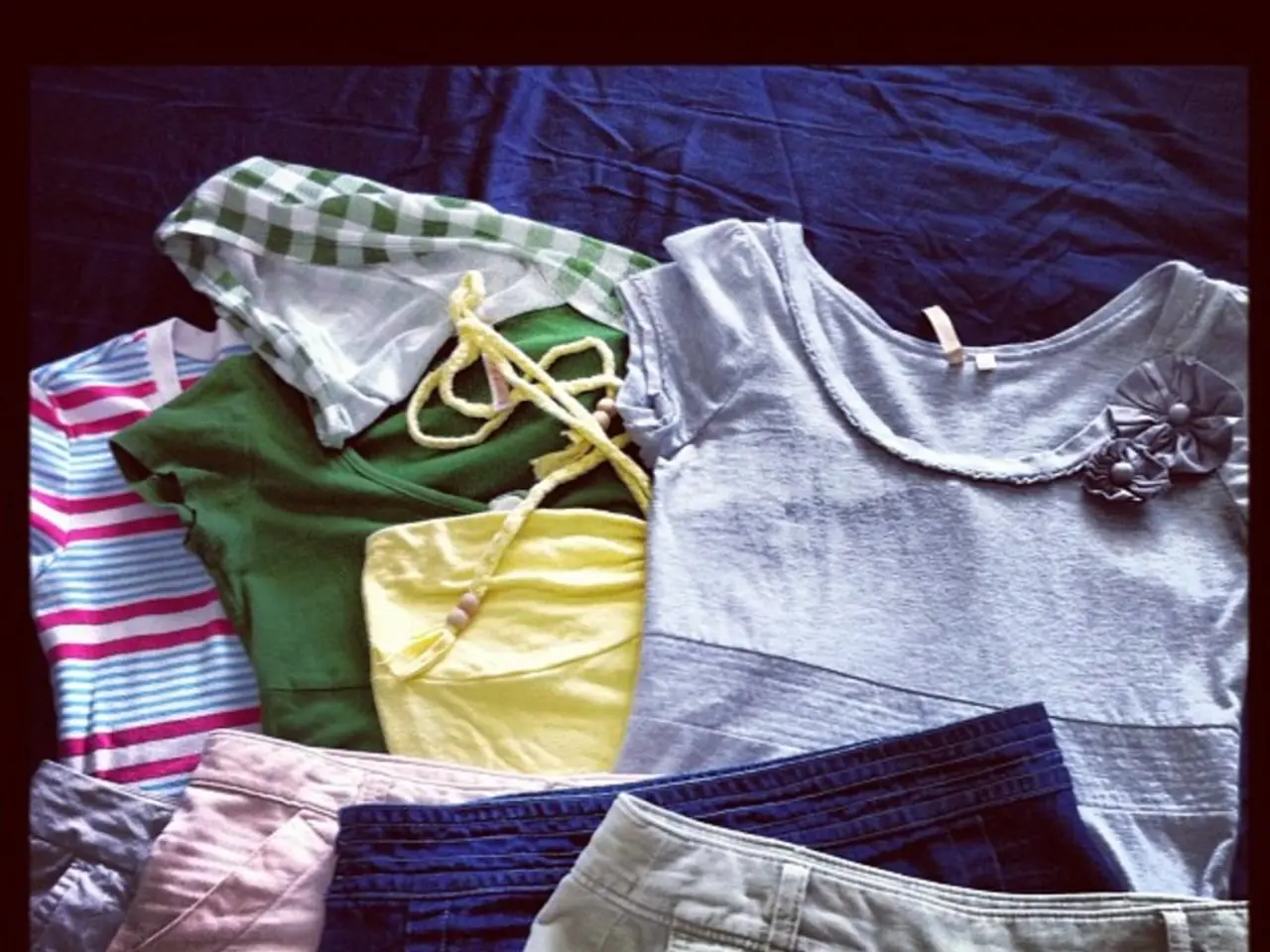Guide to Home Fabric Dyeing: A Sequential Process Instruction
Dyeing fabrics can be a creative and rewarding process, allowing you to transform ordinary materials into unique and colourful creations. This guide provides essential tips for selecting and preparing fabrics, choosing the right dyes, and following best practices for the dyeing process.
Fabric Type Considerations
Choosing the correct fabric type is crucial for successful dyeing. Natural fibres, such as cotton, wool, and silk, absorb dyes more easily and work well with various dye types like fiber-reactive, acid, and disperse dyes. Synthetic fibres, like polyester and nylon, are more resistant to standard dyes and require specialized disperse dyes and high heat for dye uptake.
Preparing the Fabric
Before dyeing, it's essential to pre-wash the fabric to remove oils, dirt, and sizing that can block dye absorption. For cotton and other cellulosic fibres, a soda ash soak helps fix the dye better and prevents fading. Working in a well-ventilated area and wearing protective gloves is also recommended.
Dye Selection
Selecting the appropriate dye is vital for achieving vibrant, lasting color. Match the dye to the fabric composition: fiber-reactive dyes for cellulose fibres like cotton, acid dyes for protein fibres like wool and silk, and disperse dyes for synthetic fibres like polyester. Consider the desired color intensity and colorfastness, as longer dye-setting times can help deepen colors, especially in tie-dye techniques.
Dyeing Process Best Practices
Maintaining the correct temperature and pH for the dye-fiber reaction is crucial. For fiber-reactive dyes on cotton, alkaline conditions are optimal, while for wool and silk, acidic conditions are preferred. Avoid rushing the setting time, as giving enough time for the dye molecules to bond firmly with the fibers is essential. After dyeing, rinse and dry the fabric in shade to preserve vibrancy and prevent fading.
Additional Considerations
Dye lot variations can occur due to temperature differences, water quality, and dye recipe, so consistent conditions are crucial for uniform results. Understanding the chemical bonding types (ionic, hydrogen bonding, van der Waals, covalent) helps in selecting the right dye and process for each fiber type.
Home Dyeing Essentials
To dye fabric at home, you will need fabric dye, hot water, a large container for dyeing, rubber gloves, salt (for cotton, linen, and rayon fabrics), vinegar (for silk and wool fabrics), and a stirring utensil. Prolonged exposure to direct sunlight can cause fading over time, so it's important to store dyed fabrics away from direct sunlight and heat sources.
Proper care can help dyed fabrics remain vibrant and beautiful for years to come. Rinse and wash the fabric thoroughly with cold water until it runs clear, and then wash with a mild detergent. After washing, the fabric should be air dried or tumble dried on a low heat setting. Natural dyes should be washed using gentle methods and natural detergents. Avoid using bleach or harsh chemicals that may strip away colour from dyed fabrics.
By following these guidelines, you can create stunning, long-lasting dyed fabrics at home. Happy dyeing!
In the realm of fabric dyeing, it's pivotal to choose fabrics wisely, selecting natural fibers like cotton, wool, and silk for easier dye absorption, while opting for specialized dyes like disperse dyes for synthetic fibers.
To achieve colorful and long-lasting results, carefully select dyes that best suit the fabric type (fiber-reactive for cellulose, acid for protein, and disperse for synthetic fibers), keeping in mind the desired intensity and colorfastness.




